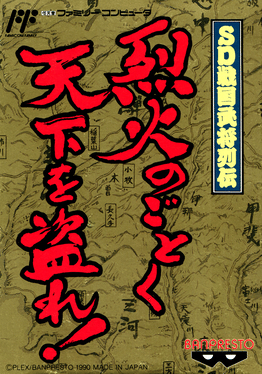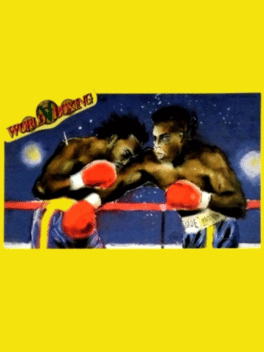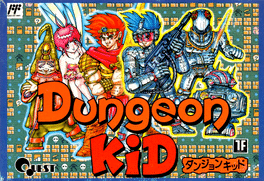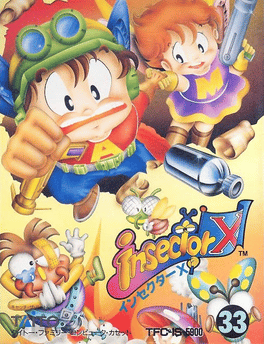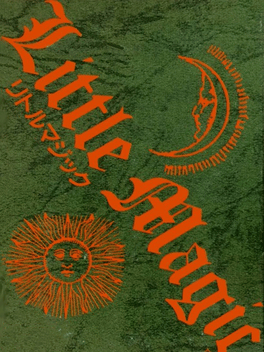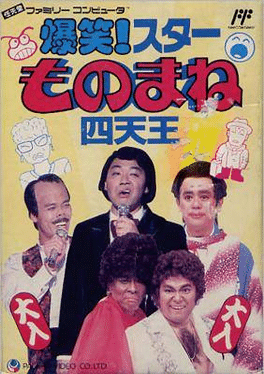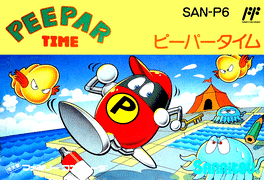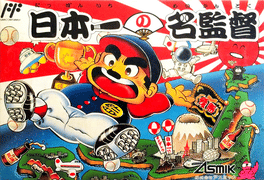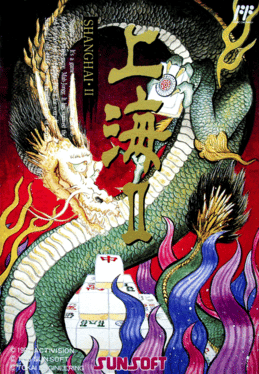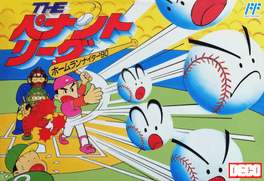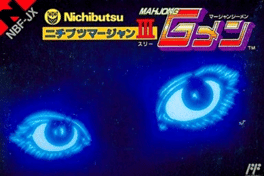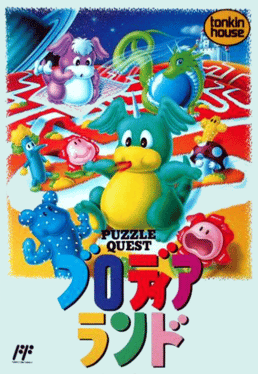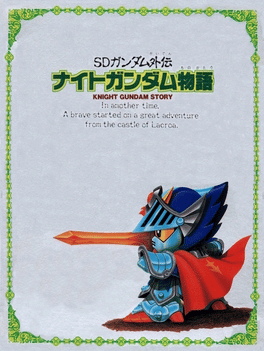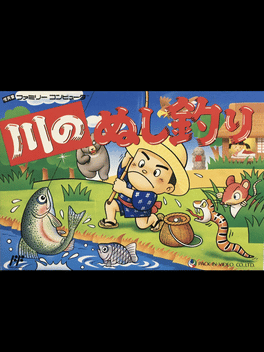New Family Computer Games - Page 26
-
SD Sengoku Bushou Retsuden: Rekka no Gotoku Tenka o Nusure!
1990
SD Sengoku Bushou Retsuden: Rekka no Gotoku Tenka o Nusure! is a Strategy game, developed by Arc System Works and published by Banpresto, which was released in Japan in 1990. -
World Boxing
1990
World Boxing
1990
World Boxing is a Sports game, developed by Natsume and published by TSS, which was released in Japan in 1990. -
Uchuu Keibitai SDF
1990
Uchuu Keibitai SDF
1990
A meteorite group floats in space, full of mystery. Near the sand filled planet, a battleship looms. Space colonies emerge in the moon light. In the endlessly wide universe, a large shooting game that unfolds . -
Dungeon Kid
1990
Dungeon Kid
1990
Dungeon Kid is a Role-Playing game, developed by Pixel and published by Quest, which was released in Japan in 1990. -
Magic John
1990
-
Insector X
1990
Insector X
1990
The player controls an insect-sized warrior named "Kai" who takes on a vast army of cyborg insects to free the insect world from the dark ruler queen. The game uses two buttons: one for an upgradable main shot, and another for a seemingly random selection of secondary weapons. -
Little Magic
1990
Little Magic
1990
Little Magic is a Strategy game, developed and published by Data East, which was released in Japan in 1990. -
Bakushou! Star Monomane Shiten-ou
1990
Bakushō! Star Monomane Shiten-ou is a Nintendo Family Computer life simulation video game that portrays the life of either a musician or a famous performer of the monomane style of Japanese theatre. The object is to earn popularity while performing concert tours through the fictional city. Celebrity challenges are included in the game; they are considered to be miniature games like swimming and kicking a giant ball into a goal in a manner similar to soccer. While these games are fun to play, losing results in a loss of popularity points similar to performing terribly at a concert. Appeasing senior citizens by performing gigs at the nursing home is another way to gain popularity. Otherwise, they will criticize the player's music or theatre styles without an end. After gaining the respect of the elderly, the mad faces eventually turn into frowns (and eventually smiles). Television appearances come in the form of talent shows, televised concerts, and several other surprises. The eventual goal is to convert all stadi -
Peepar Time
1990
Peepar Time
1990
Peepar Time is a Puzzle game, developed and published by Sanritsu Denki, which was released in Japan in 1990. -
Nippon Ichi no Meikantoku
1990
Nippon Ichi no Meikantoku is a baseball management game, where you take control of a team and manage it by controlling the player training and various other aspects of the team. You can watch games being played out and make changes during the match, such as changing the pitcher, outfield player positions and batting order. You start the game by creating your manager and entering your name, then you get a randomized number of attribute points to distribute for four different categories. After that, you choose a team to manage and five other teams to play against. -
Parallel World
1990
Parallel World
1990
Parallel World is a puzzle video game developed by EIM and published by Varie. It was released in Japan for the Family Computer on August 10, 1990. The player and his girlfriend must find their way back home after being sucked into an alternate universe. A magnificent castle full of 25 different game worlds block their progress, however, and they are filled with enemies on every stage. The player has an overhead view to destroy the enemies for extra loot. Given a strict time limit of 100 seconds to solve each puzzle, the game rewards fast puzzle solvers. The first player controls the male while the second player controls the female. Players only start with three lives and lose them when time runs out or when a monster comes into contact with him/her. Enemies in the game include springs, rollers, witches, and zombies. -
Ninjara Hoi!
1990
Ninjara Hoi!
1990
Ninjara Hoi! is a Role-Playing game, developed and published by ASCII Entertainment, which was released in Japan in 1990. -
Shanghai II
1990
Shanghai II
1990
Shanghai II is a variant of the puzzle game also known as solitaire mahjong. 144 mahjong tiles are arranged in rows and stacked upon each other in various patterns; the player's goal is to remove pairs of matching tiles that do not have adjacent tiles from both sides until the whole board is clear. This variant features six patterns named after animals: tiger, scorpion, monkey, snake, panther, and dragon. The player can choose to display hints or reverse any amount of moves. A mode with a time limit is available as well. -
Matendouji
1990
-
Home Run Nighter '90: The Pennant League
1990
Home Run Night '90: The Pennant League is a Sports game, developed and published by Data East, which was released in Japan in 1990. -
Kujaku-ou II
1990
Kujaku-ou II
1990
The adventure continues as Peacock faces the incarnation of general Nobunaga Oda. Team up with Asura, a fiery spirit, Jukindo master Onimaru, and Zen master Kou Kaifou to fight Nobunaga's missionary minions with a vast array of Shingon spells! Travel to the mystic world of the Lotus mandala and defeat Hindu demons, dark boddhisattvas, and the shadowiest villain yet, the Phoenix! -
Nichibutsu Mahjong III: Mahjong G Men
1990
Mahjong G-Men: Nichibutsu Mahjong III is a Miscellaneous game, published by Nihon Bussan, which was released in Japan in 1990. -
Blodia Land
1990
Blodia Land
1990
Blodia Land is a Puzzle game, developed by TOSE and published by Tonkin House, which was released in Japan in 1990. -
SD Gundam Gaiden: Knight Gundam Monogatari
1990
SD Gundam Gaiden: Knight Gundam Monogatari is a Role-Playing game, developed by TOSE and published by Angel (Bandai), which was released in Japan in 1991. -
Kawa no Nushi Tsuri
1990
Kawa no Nushi Tsuri
1990
Kawa no Nushi Tsuri is a fishing role playing game, developed by Yuu Yuu and published by Pack-In-Video. It is the first game in the "Legend of the River King" series. But it was never released outside of Japan. The game is unique in that it combines fishing with traditional JRPG elements with those of Fishing games.
